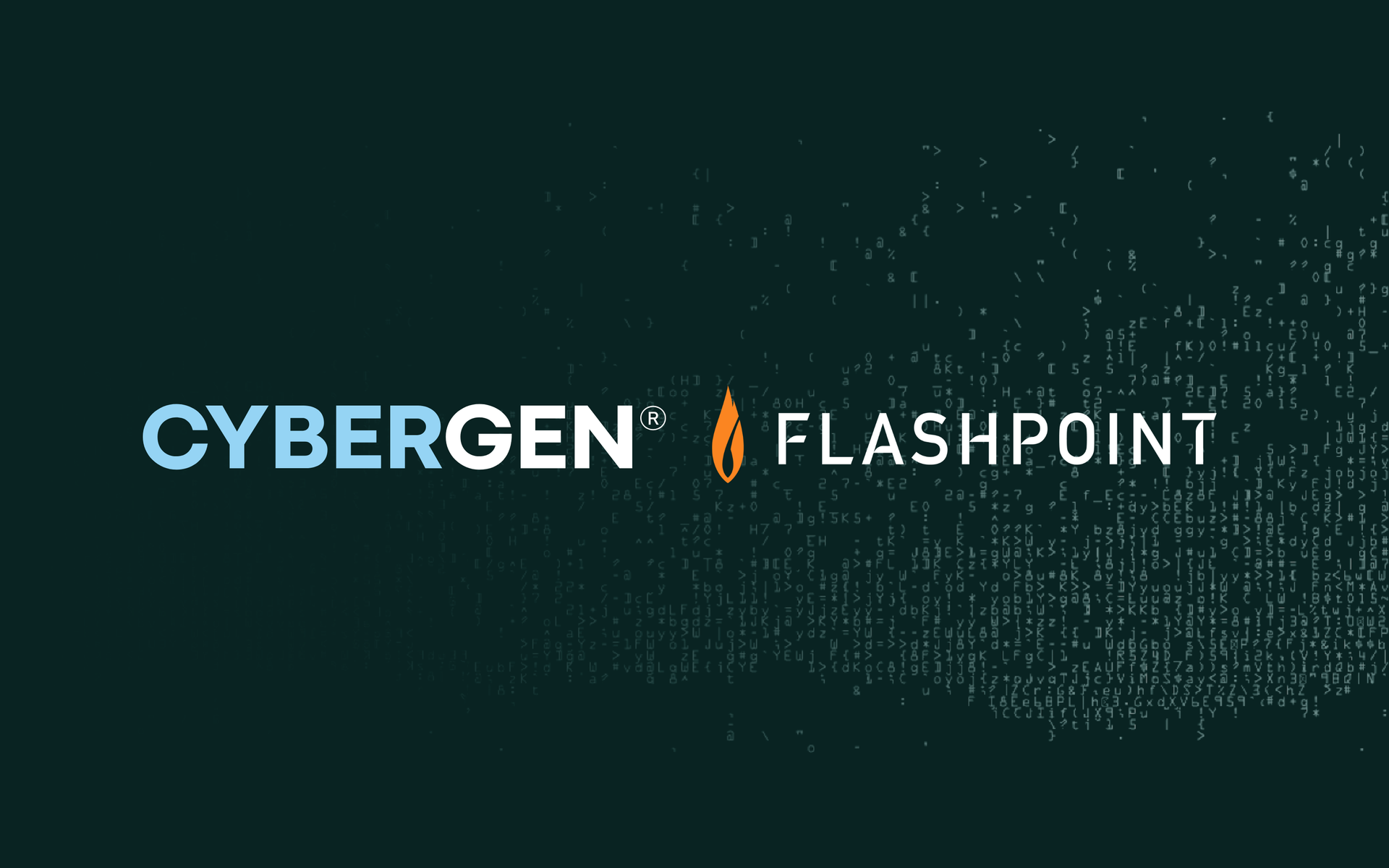Securing the Digital Rig: How Cyber Attacks on Oil and Gas Are Evolving And What to Do About It
Introduction
The oil and gas sector sits at the heart of the global economy, yet it is also on the front line of a fast-moving cyber war. From ransomware attacks on offshore rigs to targeted exploits against refinery control networks, the danger is no longer theoretical. In an industry where downtime costs millions and operational safety is paramount, cybersecurity must be treated as a mission-critical discipline.
This blog is aimed at operations managers, CISOs, compliance officers, engineers, and executive decision-makers across upstream, midstream, and downstream operations. Understanding how cyber threats are evolving and how to respond is now business-critical.
Why Oil and Gas Is a Prime Target for Cyber Attacks
High Value, High Impact, High Risk
Oil and gas remains a top target because of its high-value assets, geopolitical importance, and dependence on complex operational technology (OT). Cyber attacks here are not just costly; they can be dangerous. Industrial control systems (ICS) in this sector manage physical processes such as pipeline pressure, drilling, pumping, and refining.
If compromised, these systems can trigger equipment failure, environmental disasters, or even loss of life.
Example: Colonial Pipeline Attack (2021)
A ransomware incident forced a shutdown of 5,500 miles of pipeline, causing fuel shortages across the US East Coast. Although the attack impacted IT systems, the resulting operational disruption showed how vulnerable energy infrastructure becomes when cybersecurity falters.
Other Threat Vectors
- Nation-state espionage targeting production data and control networks
- Insider threats from employees or contractors with privileged access
- Supply-chain compromises involving third-party vendors
- Malware purpose-built for industrial environments (e.g. Industroyer, Triton)
What Makes Oil and Gas Environments Unique?
Complex and Distributed Operational Technology
Operations stretch from offshore platforms to refineries and long-distance pipelines. Sites rely on a mix of legacy equipment and cutting-edge digital controls. Security patches are often delayed because availability and safety outweigh every other concern.
Key characteristics include:
- Proprietary protocols that are difficult to patch
- Minimal segmentation between business networks and control systems
- Legacy devices lacking encryption or strong authentication
- Heavy dependence on remote maintenance
- Physical-safety requirements that limit intrusive testing
These factors mean traditional IT security methods alone are inadequate.
The Evolution of Threats in Oil and Gas
From Opportunistic Malware to Precision-Engineered Campaigns
Threats in oil and gas have evolved rapidly:
Earlier Era
Attackers relied on broad, opportunistic malware (for example, WannaCry or NotPetya) that spread via phishing or outdated systems, causing collateral disruption.
Current Landscape
Adversaries are targeted and patient. Nation-state groups craft bespoke malware to infiltrate ICS. Criminal gangs launch double-extortion ransomware, often after months of silent lateral movement.
Key Trends in Oil and Gas Cyber Threats
The digital transformation of oil and gas operations has created efficiency and flexibility, but it has also introduced vulnerabilities that attackers are increasingly exploiting. Threat actors are no longer relying on simple, opportunistic malware.
Today’s threats are targeted, sophisticated, and designed to infiltrate, observe, and disrupt. Below, we explore four of the most urgent and advanced cyber threat trends affecting the industry today.
1. RansomOps That Map a Network Before Encryption
Gone are the days of “spray and pray” ransomware. Today, attackers take a far more strategic approach. RansomOps (short for Ransomware Operations) involve methodical mapping of enterprise and operational networks before any encryption occurs. These multi-stage campaigns begin with initial access — often via phishing or vulnerable internet-facing systems — followed by lateral movement, privilege escalation, and detailed reconnaissance of the entire network architecture.
In the oil and gas sector, this often includes mapping out control rooms, production scheduling software, logistics systems, field telemetry, and the connections between upstream and downstream environments. Threat actors avoid triggering alarms by operating silently for days or weeks, studying backup systems, and disabling security tools before deploying encryption or exfiltrating data.
This is especially dangerous in energy environments, where downtime can cause cascading effects across supply chains and regional energy security. The ransom demand becomes more than financial — it becomes a negotiation over national infrastructure and public safety.
Mitigation strategies include:
- Implementing network segmentation between corporate IT and OT
- Using endpoint detection and response (EDR) tools that identify abnormal behaviours
- Frequent threat hunting to detect early stages of lateral movement
- Backups stored offline and tested regularly for integrity
2. OT Reconnaissance Tools That Catalogue Controllers, Sensors, and Actuators
Operational technology (OT) environments rely on sensors, actuators, controllers, and logic solvers to maintain safety, pressure, and process control in real time. Modern attackers know that disrupting these systems requires understanding their layout — which is why they increasingly use OT-specific reconnaissance tools to silently scan and catalogue connected field devices.
These tools are designed to:
- Detect the make and model of programmable logic controllers (PLCs)
- Identify the firmware versions of process automation hardware
- Monitor system commands, pressure thresholds, and safety shutdown parameters
- Map communication flows between remote terminal units (RTUs) and human-machine interfaces (HMIs)
In oil and gas settings, particularly on offshore platforms and pipeline compressor stations, this level of insight allows attackers to develop tailored exploits or simulate legitimate operator commands. Worse still, passive reconnaissance may go unnoticed by traditional security monitoring.
Mitigation strategies include:
- Deploying deep packet inspection (DPI) tools that understand OT protocols (e.g., Modbus, DNP3)
- Using passive monitoring systems to detect scans and enumeration attempts
- Conducting asset inventory with secure tools before attackers do
- Isolating high-value process controllers behind access control zones
OT reconnaissance is a warning sign not just of espionage but of potential future sabotage. Recognising it early is critical to preventing full-blown attacks.
3. Phishing-as-a-Service Aimed at Engineers and Contractors
Social engineering remains one of the most effective ways into oil and gas networks, but it has become even more accessible to attackers with the rise of Phishing-as-a-Service (PhaaS).
These underground services offer pre-built, customisable phishing kits specifically tailored to mimic energy sector vendors, maintenance software platforms, and enterprise login portals.
What makes PhaaS even more dangerous is its focus on engineers, technicians, and third-party contractors. These individuals often hold elevated access to field equipment, SCADA software (when used), and maintenance portals. Targeting them bypasses conventional corporate cybersecurity protocols.
In some campaigns, attackers have mimicked OEM support teams to trick engineers into installing malicious updates. Others use fake invoice emails or RFQ documents to deploy credential harvesters.
Key concerns in oil and gas include:
- Field contractors using personal or unmanaged devices
- Time-sensitive engineering work that encourages users to click without scrutiny
- Poor visibility into vendor email hygiene
- Stolen credentials leading directly to operational environments
Mitigation strategies include:
- Enforcing multi-factor authentication across all systems, especially remote access
- Running targeted phishing simulations for field personnel
- Requiring vendor access through secure, monitored portals
- Conducting pre-access security briefings for third-party technicians
Phishing is no longer a broad attack method. It’s highly targeted, refined, and designed to blend into the workflows of the oil and gas workforce, from offshore crews to pipeline engineers.
4. Zero-Day Exploits Focused on Industrial Controllers
One of the most concerning developments is the increasing use of zero-day vulnerabilities targeting industrial control components. These are software or firmware flaws that are unknown to the vendor, and therefore have no patches or fixes available at the time of exploitation.
In oil and gas, these zero-days may exist in:
- PLC firmware
- Historian software for field data
- Engineering workstations used for programming control systems
- Protocol stacks for industrial networking gear
- Vendor update mechanisms
Unlike traditional IT zero-days that target web applications or operating systems, industrial-focused zero-days can allow attackers to bypass physical safety mechanisms, manipulate real-time pressure valves, or crash control room operations entirely.
The Triton malware incident was a stark example. It exploited previously unknown vulnerabilities in a safety system, attempting to disable protective trip functions at a petrochemical facility. If successful, it could have caused an explosion.
To defend against industrial zero-days, organisations should:
- Conduct secure firmware validation during asset procurement
- Limit internet exposure of engineering stations
- Use application allowlisting to block unauthorised code execution
- Join sector-specific threat sharing groups (e.g., Oil & Natural Gas ISAC)
No organisation can entirely eliminate the risk of zero-days. However, defence-in-depth and controlled access policies dramatically reduce the chance of exploitation becoming catastrophic.
These trends highlight the strategic evolution of attackers in the oil and gas sector. No longer content with low-effort disruption, today’s adversaries combine patience, precision, and technical depth. Whether through stealthy reconnaissance, social engineering, or exploiting the unknown, they aim to control or cripple critical infrastructure.
The best defence is a proactive one.
The Risks of Inaction
Choosing not to modernise security controls invites severe consequences:
Downtime
Every Minute Offline Incurs Huge Revenue Loss
In the oil and gas sector, operational continuity is everything. Downtime, even if only temporary, can result in massive financial losses. A disrupted pipeline, halted refinery, or delayed offshore operation can cost organisations millions per hour. In this high-stakes environment, any interruption caused by cyber incidents becomes not just a technical issue but a direct hit to the bottom line.
Operational downtime affects the entire value chain:
- Upstream: If drilling rigs or offshore platforms are disrupted, production targets are missed, and exploration schedules fall behind.
- Midstream: If pipeline sensors or control valves are compromised, product flow is halted, affecting distribution contracts and regional supply levels.
- Downstream: If refining operations are frozen, it delays fuel processing and shipment, causing delays at terminals and affecting global markets.
Modern ransomware campaigns often exploit this sensitivity. Attackers understand that oil and gas operators are more likely to pay ransoms simply to restore operations quickly. This has made the industry a favourite target for RansomOps.
Indirect consequences of downtime include:
- Contractual penalties for failing to meet delivery timelines
- Increased insurance premiums due to elevated operational risk
- Market share loss to competitors who maintain uninterrupted supply
The sheer cost of downtime in oil and gas underscores the critical need for resilient cyber defences, including failover systems, robust incident response plans, and threat simulations to ensure continuity under pressure.
Safety Hazards, Manipulated Control Signals Can Rupture Pipelines or Ignite Refineries
Cybersecurity is not just a digital concern — in oil and gas, it is a matter of life and death. Many cyber-attacks now target control systems that manage physical processes. If these signals are manipulated, the consequences can be catastrophic.
For example, an attacker could alter pressure settings in a pipeline, leading to a rupture. In a refining environment, they might override emergency shutdown procedures or ignite flammable vapours. These actions are not theoretical. Malware like Triton and Industroyer was specifically designed to disable safety systems in energy facilities.
The key risk areas include:
- Altering sensor data to hide leaks or faults
- Disabling alarms in control rooms
- Sending unauthorised commands to actuators, valves, and compressors
- Delaying emergency shutdown (ESD) responses
Facilities must treat cybersecurity with the same gravity as physical safety. Cyber intrusions into field operations can lead to explosions, toxic exposure, or fire, especially where hydrocarbons are extracted, stored, or refined under pressure and heat.
The oil and gas industry already follows strict safety protocols. But without integrating cybersecurity into those safety layers, the protective chain is incomplete. Cyber-physical risks must be factored into hazard and operability studies (HAZOP), and security testing must consider how a digital failure could cause physical harm.
Compliance Failures, Breaches of Frameworks Such as NIS2 or ISO/IEC 27019 Result in Legal Fines and Investor Concern
Oil and gas companies are subject to a growing list of cybersecurity regulations. In the UK and EU, the NIS2 Directive mandates stronger protections for operators of essential services, including energy providers. Globally, frameworks such as ISO/IEC 27019 provide standards specifically tailored for process control in energy operations.
Failure to comply with these standards can result in significant legal and financial repercussions:
- Regulatory fines for inadequate controls or delayed breach notifications
- License suspensions in certain jurisdictions following major cyber events
- Increased audit frequency and operational oversight
- Difficulty securing insurance coverage for cyber-related risks
Beyond fines, compliance failures shake investor confidence. Shareholders expect oil and gas firms to uphold best practices not just in production, but also in data security and operational resilience. In today’s ESG-focused landscape, cybersecurity is seen as a proxy for responsible corporate governance.
Investors and stakeholders scrutinise:
- Incident response times
- History of cyber breaches
- Certifications (ISO, Cyber Essentials, etc.)
- Disclosure practices regarding security posture
Demonstrating alignment with regulatory frameworks builds trust. Failing to do so invites scrutiny, undermines partnerships, and may reduce access to capital markets.
Reputational Damage, Shaken Stakeholder Confidence and Negative Media Coverage
Oil and gas companies operate under intense public and political scrutiny. When a cybersecurity incident occurs, the media coverage is swift and often brutal. Headlines focus on the consequences, whether fuel shortages, explosions, or environmental harm — not the technical nuance of how the breach happened.
This reputational impact has long-term consequences. It affects:
- Customer confidence: particularly for downstream operators reliant on consistent product delivery
- Business partnerships: including joint ventures with governments or multinationals who demand strong risk management
- Talent acquisition: as top-tier professionals avoid organisations perceived as unsafe or outdated
- Market perception: where stock value may drop simply due to the reputational aftershock of an incident
The media and public are increasingly aware of the cybersecurity responsibilities of critical infrastructure operators. In this environment, transparency, readiness, and post-incident communication are as important as technical controls. Cybersecurity failures are no longer just IT issues; they’re public affairs crises.
Oil and gas firms must be ready not just to detect and stop attacks, but to communicate clearly when they occur. Reputational protection begins with preparation.
Environmental Impact, Uncontrolled Leaks or Fires Devastate Ecosystems
Perhaps the most severe consequence of a cyberattack on oil and gas infrastructure is environmental destruction. Whether caused by a pipeline rupture, uncontrolled flare, or failed emergency shutdown, the environmental damage can be widespread, long-lasting, and difficult to recover from.
Potential scenarios include:
- Overpressured pipelines releasing oil or gas into marine or forest environments
- Manipulated tank level readings leading to overflows and chemical spills
- Ignition of volatile compounds in refineries or offshore processing platforms
- Failure of underwater blowout preventers due to remote interference
Such incidents have both local and global implications. Local communities may lose access to clean water or safe land. Globally, such disasters reinforce negative public sentiment toward fossil fuels, impact ESG ratings, and increase pressure from climate advocates and regulators.
For organisations, this impact is multi-dimensional:
- Legal liability from environmental protection agencies and class-action lawsuits
- Remediation costs that run into the tens or hundreds of millions
- Loss of permits or exploration licenses in ecologically sensitive areas
- Permanent damage to social licence to operate
Protecting the environment must go hand-in-hand with securing digital assets. Cybersecurity is now a pillar of environmental risk management — not just a support function.
Best Practices for Securing Oil and Gas Operations
1. Conduct ICS-Specific Penetration Testing
Generic IT assessments are insufficient. You need specialists who understand industrial protocols and can emulate real-world attacks on controllers, sensors, and actuators without interrupting production.
Cybergen recommends:
- Passive reconnaissance to map control networks safely
- Controlled simulations that respect process integrity
- Alignment with NIST SP 800-82 and ISA/IEC 62443 standards
2. Separate Business and Control Networks
Strong segmentation prevents malware crossing from office systems into critical operations. Recommended measures include:
- Firewalls with strict whitelisting
- Data-diode architectures where appropriate
- Role-based access controls
- Secure gateways for vendor maintenance
3. Harden Remote Access
Most breaches begin with stolen credentials or compromised remote-access software. Strengthen these entry points by:
- Enforcing multi-factor authentication
- Restricting VPN use to managed devices
- Recording and auditing every remote session
- Reviewing vendor privileges on a regular schedule
4. Deploy Continuous Monitoring and Threat Detection
Real-time visibility is vital. Implement security information and event management (SIEM) platforms that understand industrial protocols. Combine this with anomaly detection to spot deviations in process behaviour at an early stage.
5. Build a Security-Conscious Culture
People remain the weakest link. Provide role-specific training:
- Engineers learn about phishing, media hygiene, and portable-device risks
- Executives rehearse incident-response decisions
- Vendors follow hardened connection procedures
The Cybergen Approach
Cybergen specialises in protecting the unique blend of IT, OT, and safety requirements that define oil and gas. Our services include:
- ICS-Aware PenTesting, safe, thorough assessments that reveal critical weaknesses without causing downtime
- Threat Intelligence and Monitoring, continuous insight into adversaries targeting energy assets
- Secure Architecture Design, segmentation, remote-access hardening, and least-privilege strategies
- Staff Enablement, training and tabletop exercises for engineers, executives, and third parties
- Compliance Support, guidance on NIS2, OG86, ISA/IEC 62443, and ISO/IEC 27019 readiness
Learn more on our
penetration-testing page.
Summary
Oil and gas operations cannot leave cybersecurity to chance. Modern attackers combine patience, precision, and technical skill to exploit industrial control systems. The resulting downtime, environmental harm, and reputational fallout can be catastrophic.
Proactive, industry-specific defences from penetration testing to network segmentation and continuous monitoring are the only rational path forward. Cybergen stands ready to secure your digital rig, protect your workforce, and safeguard the environment. Reach out today to discuss how we can help you stay ahead of evolving threats.
Ready to strengthen your security posture? Contact us today for more information on protecting your business.
Let's get protecting your business
Thank you for contacting us.
We will get back to you as soon as possible.
By submitting this form, you acknowledge that the information you provide will be processed in accordance with our Privacy Policy.
Please try again later.








